Video Menu
My Favorite Videos
My Favorite Videos
Golf Setup & Posture
Sorry, you need to be a member to access this video.
You Are Just Seconds Away - Become a member here!
Already a member? Log in now

Golf posture is one of the most overlooked critical aspects of the golf swing, but one of the easiest places to make big improvements! This golf instruction video shows you how to develop a proper golf setup for increased power and reduced chance of injury in the golf swing.
- Many golfers round their necks or shoulders forward at setup - this is incorrect
- Hinge from the hips at setup, rather than bending at the waist
- Roll your ankles slightly inward and outward to find the balance point where your weight is centered
- Rock forward and back to find the balance point where your weight is over the center of your ankles
Setup in the golf swing is one of the most underrated, critically important parts and fundamentals of the golf swing.
And the reason it's so important is because your setup of your spine angle and your pelvis really determines swing plane and path in a large degree.
So when you set up incorrectly or the way most every single golfer on the planet does, with not enough axis tilt, getting the right side on top of the swing or on top of the club at a dress, you're going to put yourself in a position where you're going to want to reverse pivot, which is this move I'll talk about more in a second.
You're going to have a terrible swing plane that's going to tend to be over the top and hit this big nasty banana pull slice, which isn't any fun, doesn't go anywhere, and every golfer's the dread of the bane of their existence.
And you're also going to put yourself at risk for injury.
So with rotary Swing, what we're talking about is we look at the setup from stacking your joints to put everything in neutral.
So that we can have a full range of motion with our body rotation and a proper swing, plane and pass so the ball goes where we want it to.
So let's talk about setup here.
One thing we're going to talk about, I've talked about stance width in the other videos about how wide your stance should be.
You should be familiar with that now.
It's very important that you set up with a proper stance width, otherwise your head's going to be moving all over the place and you're going to have a really hard time shifting your weight, which is critical in the swing.
But one of the big things I want to talk about here is axis tilt.
And I talk about axis tilt in some other videos, but I want to be specific about it here.
The axis tilt is the angle that you set your spine at a dress.
So when you set up, what most golfers do is they set up with their spine very vertical.
So if I'm putting the club through my belly button in my sternum here, and they set up this way and they get their right arm kind of on top of the club and so they look like this at a dress with a really weak right hand.
And what this is going to do with this vertical spine, as you start going back, your hips are going to start going this way and your upper body is going to start going this way and you're going to have the dreaded reverse pivot.
It's all because of axis tilt at setup.
To get proper axis tilt, stand straight up, take the club, put it across your sternum and your belly button, and slide your hips to the left until the club hits you in the leg.
As I do this, now I have axis tilt.
And what that's going to allow me to do is as I shift to the right going back, I'm still going to be able to have tilt away from the target at the top of my swing instead of this dreaded reverse pivot move.
This isn't a very powerful position to be in, obviously.
You want to be loaded up behind the ball and you have to have axis tilt in order for you to do that.
So really, really important that you focus on just this simple little lateral hip movement to get your hips to move forward to put the club, or excuse me, your spine in the proper position at address.
One of the big things that we're trying to do with rotary swing is keep your spine in neutral joint alignment as much as humanly possible to prevent injury.
There's a lot of force on your spine in the golf swing and we want to make sure that you never get injured.
And to do that, you need to make sure that your spine stays in neutral as much as possible.
We see this kind of stuff all the time where people got this big curve in their spine and they have no axis tilt, and then you start swinging back and create this kind of crazy motion and putting all this terrible, terrible torque and force on your spine.
We want to make sure you stay in neutral.
So it's really important that you have, as you create this axis tilt, that you just let your hips slide laterally.
Let this hip drop down a little bit.
Your pelvis is going to tilt a little bit and that's keeping your spine in neutral.
Now, another big key that we want to talk about with keeping your spine in neutral is what it looks like from down the line.
So as I'm doing this, obviously it's really easy for me to be in neutral joint alignment.
You You can think about just somebody had a string attached to the top of your head and they just kind of pull you up and you're in a nice, neutral posture.
You can be like this all day.
Your spine is in your joints, your vertebrae are in perfect alignment and so it's very easy for you to make a full turn.
Every golfer can make a full shoulder turn, I promise you, when your spine is in neutral and you move from the correct place.
So it's really easy for me to turn and talk to the camera here with my chest turn 90 degrees.
Now as soon as I do this, which is what most people do to get the club, they roll their shoulders forward, they kind of hunch forward like this and they set up like this.
Well now, To turn and talk to you is really hard and I'm having a hard time and it feels really uncomfortable.
Because I've taken my spine out of neutral and as you do that, you start losing rotational mobility in your spine.
Each vertebrae that you have only has about a degree, degree and a half of rotation.
So in order to make a full, which is going to be a 45 degree turn in relationship to your hips, a full 45 degree turn, you need every single little bit of rotation from every vertebrae up the chain.
But when you start taking them and you round them over, Well, these facet joints get locked a little bit and so they lose rotational mobility.
And so all of a sudden you can't make a full shoulder turn anymore because you've rounded your shoulders forward, and now all of a sudden it's really hard to make any rotation.
So you can feel this for yourself if you're sitting in a chair watching these videos right now.
Just roll your shoulders really far forward, kind of roll your waist from the, roll forward from the waist and try and turn back and forth and then stand up nice and tall and then turn.
All of a sudden, miracle, you've got 20-30 degrees more rotation.
Obviously it's not a miracle, you just need to keep your joints in neutral.
So as you set up to the ball, make sure that you feel nice and tall, your spine is in neutral and as you hinge forward, you hinge from the hip socket, not from your waist because again it's going to take your spine out of neutral.
So what you're going to do is focus on hinging forward from your hips and as you do that, in order to keep your balance, your weight, just keep it stacked over your ankles, which we're going to talk about next, is going, your hips are going to move back as your body moves forward as a counterbalance.
So now I've kept my spine in neutral, head's back, shoulders are back, and as I reach for the club, I don't want to roll my shoulders forward all of a sudden.
I'm going to keep my spine in neutral, hinge forward, grab the club.
So now I've got my spine in neutral, we're going to focus on where all the club and all that stuff is in a second, but now I have the ability to make a nice full turn because I've kept my spine in neutral, which is critical, and I have axis tilt, which is going to prevent the dreaded reverse pivot move.
So now I'm going to talk about one of the most important fundamentals of setup, and it's one of the most misconstrued pieces of advice that causes more injuries in the golf swing than probably any other piece of advice, and that's where should your weight be at setup.
That is a critical piece that RST kind of argues with where people think it should be, because the most common taught way for your weight set, where your weight distribution is at address, is to be on the balls of your feet.
Nothing could be further from the truth.
That's the last place you want to set up, is to be way forward on your toes.
Why is that?
Well, when you do that, as you go back, the tendency is going to be for you to move your weight further onto your toes, and then your primary balancing joint becomes your knee instead of your hip socket, where you can load your glutes and your hamstrings properly.
Now you're going to feel it all in your quads.
You can get away with that.
That's not the worst thing in the world.
It's not ideal, but it's not the worst thing in the world.
But where stuff really starts becoming a problem is in the downswing.
When you keep your weight on the ball of your foot, I want you to do this now if you're watching this video.
Stand up, put all of the weight on the ball of your foot, and now try and rotate your hip like you would in the golf swing.
You're gonna feel really quickly, with the weight on the ball of your foot and trying to rotate on this leg, that your knee, all of a sudden, has a very uncomfortable feeling in it, and if you've got knee problems, it's gonna hurt.
And this is how a lot of golfers get injured, is that they have the weight on the ball of their foot at impact, and they're trying to rotate on their knee.
Instead, we want to move your weight back to your ankle, and rotate now, and now your primary balancing joint is your hip socket, and you can do this all day long pain-free, as long as you're in neutral joint alignment.
So at setup, if you're setting up way on the balls of your feet, it takes a lot more work to then move your weight back to your ankle and back to your ankle in the downswing.
So we start you out there.
You're gonna start, we kind of use a range here, between your ankle and the middle of your foot, is about where your weight needs to be at setup.
We don't ever want it up here, and then as you go back, your weight's gonna move back to the ankle a little bit further, and then the downswing, it's gonna move kind of the middle of your foot and then back over the ankle again, so that you can protect your knee and your hip and rotate properly.
So at setup, you want to be kind of in the middle range there.
You never want to be on the balls of your feet, unless you want to blow out your knee, or you're really good at moving your weight efficiently and can move your weight all the way back to your ankle.
That's what you see a lot of tour pros do, because they will set up on the balls of their feet, but they won't be there at impact.
And if they are, they won't be there very long, because they're going to injure their knee.
So make sure that as you set up correctly, you feel like your weight is stacked, just like you would in neutral joint alignment, standing up, talking to somebody.
Your weight, you don't stand to talk to somebody on the balls of your feet, that's off balance.
So, and again, remember that you've got all of the force of this club moving out this way in the downswing, and a driver swung by, you know, somebody with some reasonable club head speed effectively weighs about a hundred pounds through impact.
So you've got, imagine a hundred pounds of force pulling you this way.
Well, if you're on the balls of your feet, what are you going to do?
You're going to have a tendency to fall forward, right?
We've all seen that movement at the driving range, right?
It's one of my favorite ones to watch.
So you're trying to actually move back this way to fight all of the force of the club moving that way.
And as you're doing that, you're moving further back onto your ankle in the downswing.
At setup, we want to start there.
Okay, so we're going to be nice and neutral.
You can draw a straight line from the center of my ear, center of my shoulder, back of my elbow, center of my hip socket, back of my knee, center of my ankle.
That's neutral.
And as I set up, I want to make sure that I maintain that.
So as you bend forward, you're going to be like, wait a second, I'm moving onto the balls of my feet as I move forward because I've got all this mass bending this way.
Well, in order to counterbalance your upper body hinging forward to get down to the ball on the ground, your hips have to then go back.
So as I do this, they work together.
I'm hinging forward, my hips go back, relax my knees.
I'm in a nice, powerful, balanced, anchored setup position.
I don't feel like I'm going to fall over.
I don't feel like you could come and knock me over this way either.
I'm balanced.
That's critical at setup.
The last thing we're going to talk about is ball position.
Where should the ball be at setup?
Simplest way to think about it, left ear, logo on your shirt, just inside your armpit.
It's going to be just forward of your stance, further up than most people want to put it.
But it's got to be up here because again, the lead side of your body is the primary controller in the golf swing.
And so if you have the ball way back here, you're going to have a tendency to not shift your weight.
You're going to be very right side dominant.
So ball position is going to be up off your left ear.
And now if we set up with axis tilt, balanced over our ankles, right arm just comes underneath kind of relatively passive.
It's in a weaker position than the lead arm.
And we talk about stance width in the other videos.
So we've got a little nice neutral stance width based on our pelvis width.
And now we have a tour pro setup every time.
And that's going to give you the best chance to make the best golf swing possible injury free, powerfully and efficiently.








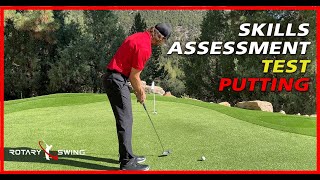


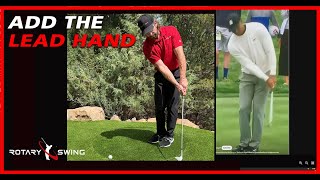


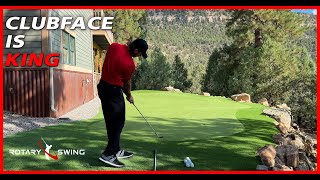








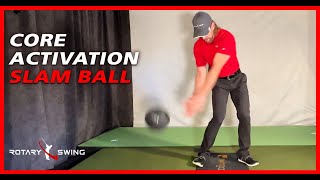





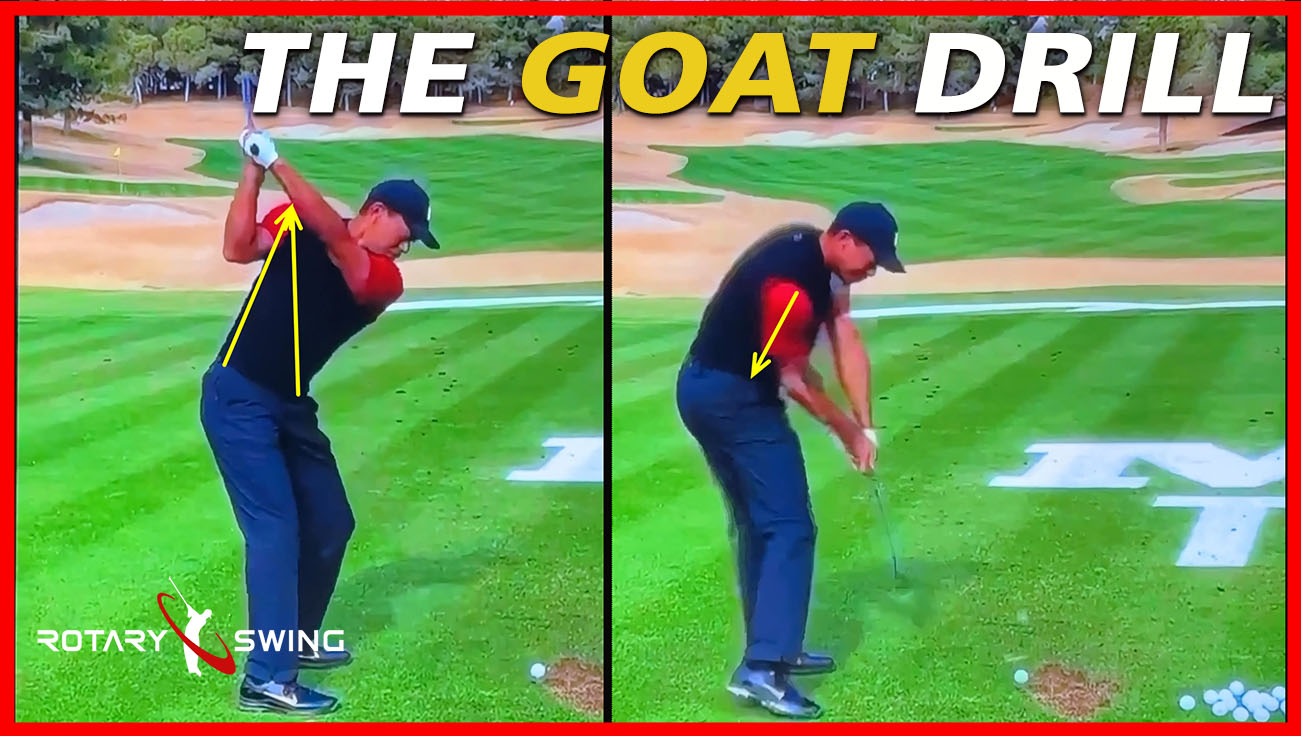


















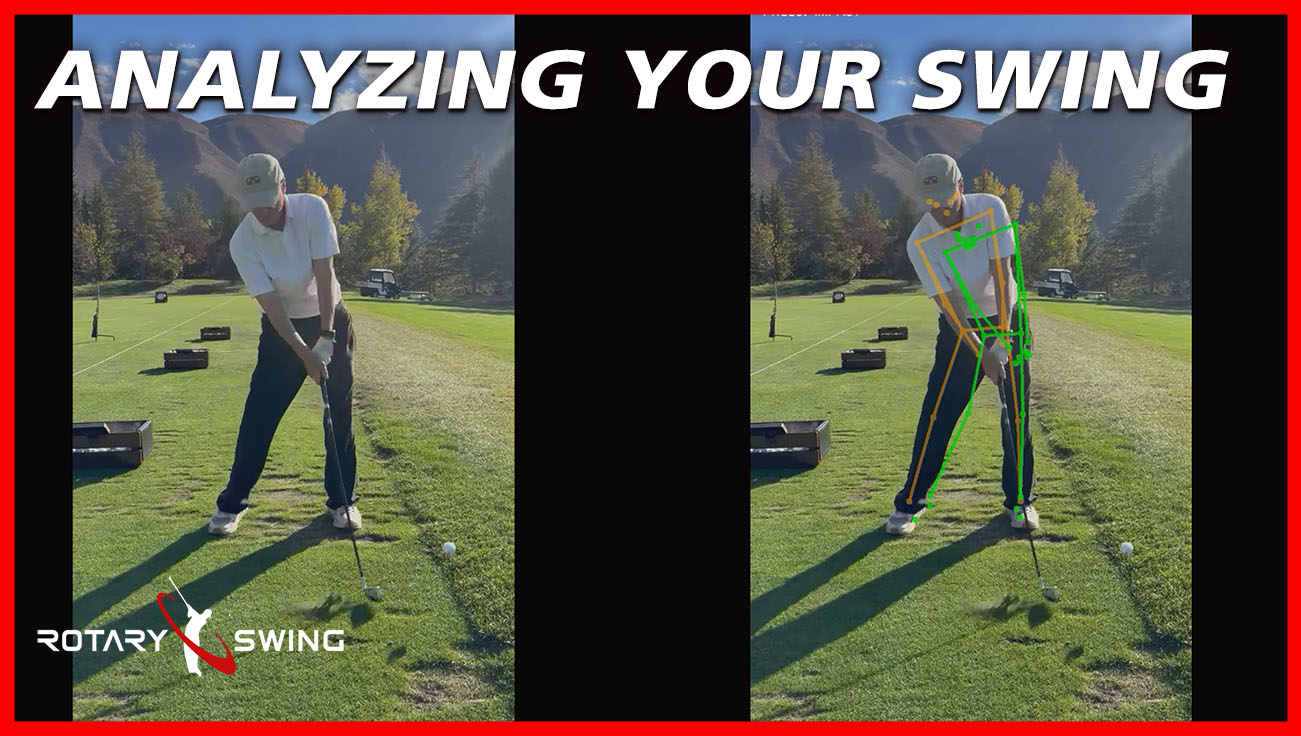









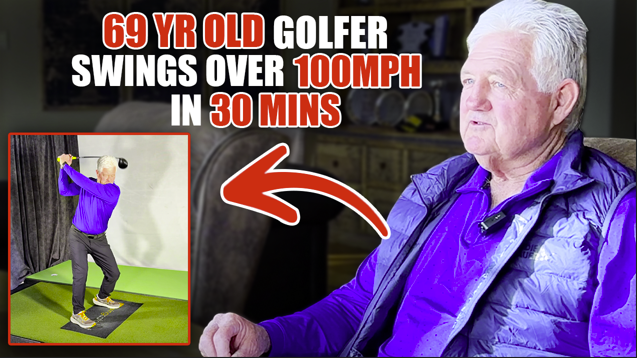
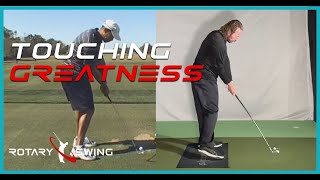

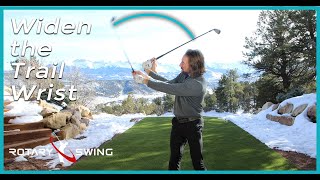



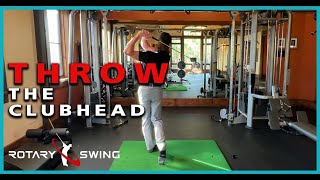







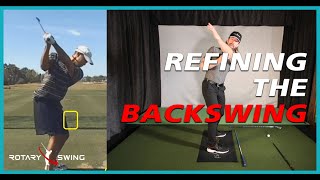







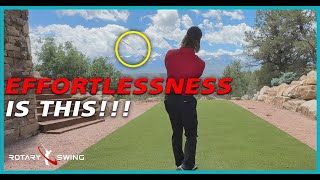
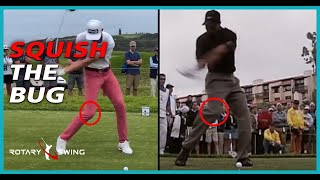
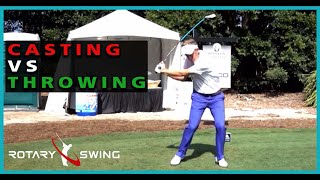



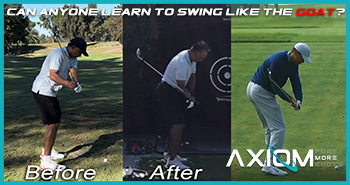


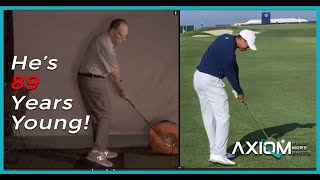



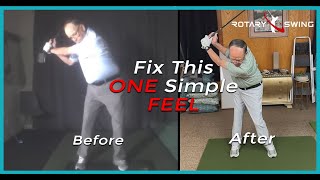











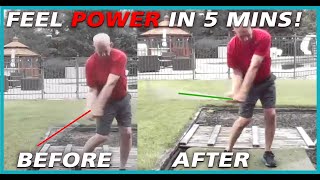


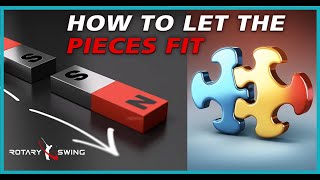

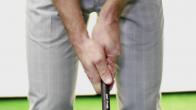















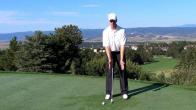

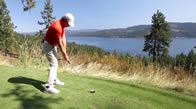



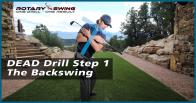

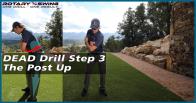
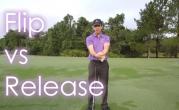









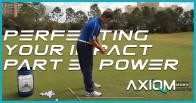











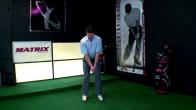



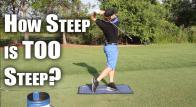


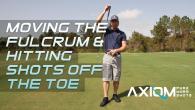



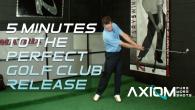

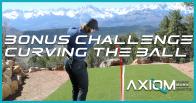






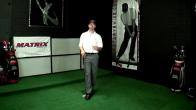









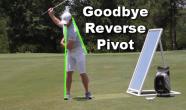





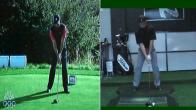



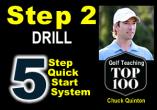






















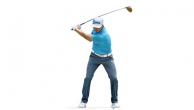
























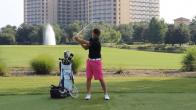








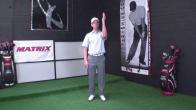




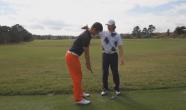





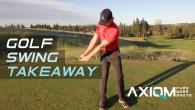









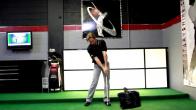



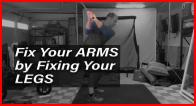


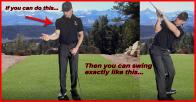




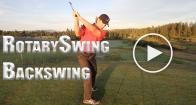

















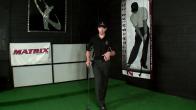





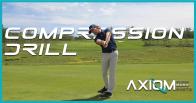
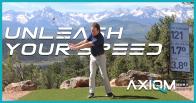
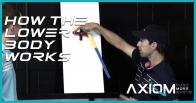












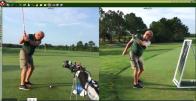






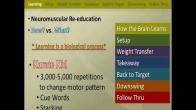
















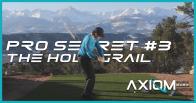

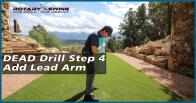


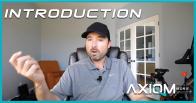

















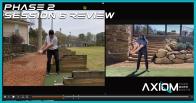







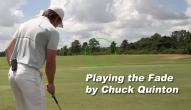











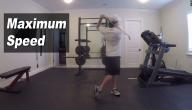

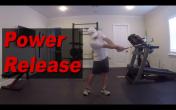
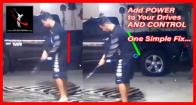


















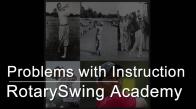



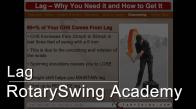



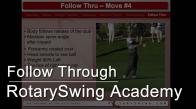






















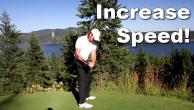



















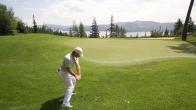





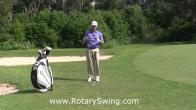



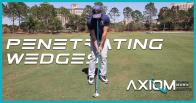



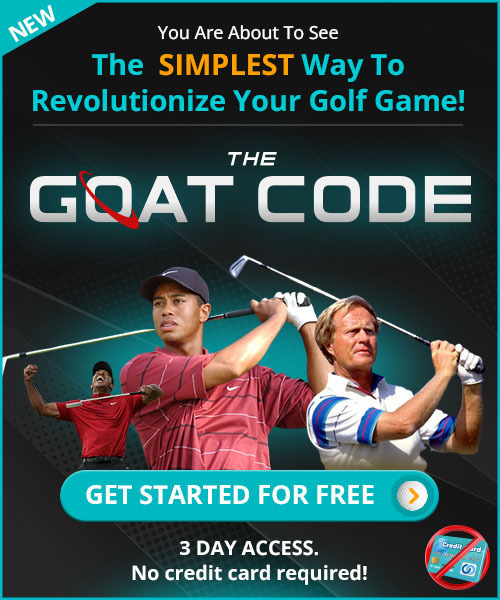
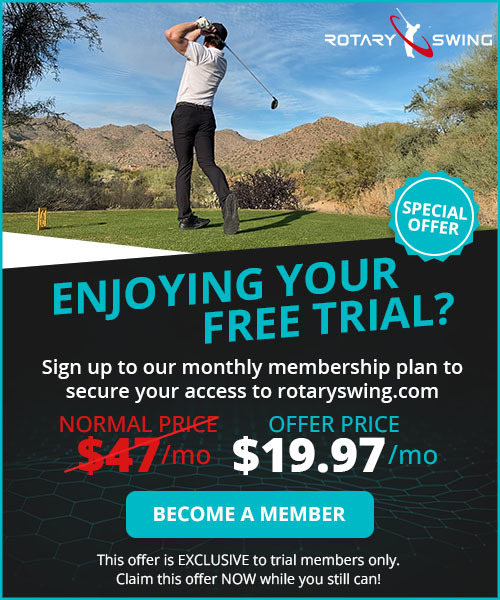


Jonathan
Craig (Certified RST Instructor)
Jeff
Craig (Certified RST Instructor)
Jeff
Craig (Certified RST Instructor)
Jeff
Craig (Certified RST Instructor)
Steve
Craig (Certified RST Instructor)
Steve
Craig (Certified RST Instructor)
Steve
Craig (Certified RST Instructor)
Shaun
Craig (Certified RST Instructor)
Shaun
Craig (Certified RST Instructor)
Venkatesh
Craig (Certified RST Instructor)
John
Craig (Certified RST Instructor)
John
Craig (Certified RST Instructor)
Jeren
Craig (Certified RST Instructor)
Gerard
Craig (Certified RST Instructor)
Eric
Craig (Certified RST Instructor)
Eric
Craig (Certified RST Instructor)
larry
Craig (Certified RST Instructor)
David
Craig (Certified RST Instructor)
Clinton
Craig (Certified RST Instructor)
Eric
Craig (Certified RST Instructor)
Chris
Craig (Certified RST Instructor)
Randy
Craig (Certified RST Instructor)
James
Craig (Certified RST Instructor)
James
Craig (Certified RST Instructor)
Sam
Craig (Certified RST Instructor)
Sam
John
Craig (Certified RST Instructor)
John
Kenneth
Craig (Certified RST Instructor)
Neale
Craig (Certified RST Instructor)
charles
Craig (Certified RST Instructor)
Eric
Craig (Certified RST Instructor)
Eric
Craig (Certified RST Instructor)
Eric
Craig (Certified RST Instructor)
Eric
James
Craig (Certified RST Instructor)
robert
Craig (Certified RST Instructor)
Alan
Craig (Certified RST Instructor)
Charles
Craig (Certified RST Instructor)
Daniel
Craig (Certified RST Instructor)
Craig
Craig (Certified RST Instructor)
Romer
Craig (Certified RST Instructor)
Frank
Craig (Certified RST Instructor)
Eric
Craig (Certified RST Instructor)
Eric
Craig (Certified RST Instructor)
Richard
Craig (Certified RST Instructor)
Mike
Craig (Certified RST Instructor)
Brian
Craig (Certified RST Instructor)
Jason
Craig (Certified RST Instructor)
Jonathan
Craig (Certified RST Instructor)
Michael
Craig (Certified RST Instructor)
Joe
Craig (Certified RST Instructor)
Don
Craig (Certified RST Instructor)
Kyaw Thet
Craig (Certified RST Instructor)
Michael
Craig (Certified RST Instructor)
Lawrence
Craig (Certified RST Instructor)
Sonny
Craig (Certified RST Instructor)
Christopher
Craig (Certified RST Instructor)
Gary C
Craig (Certified RST Instructor)
Malcolm
Craig (Certified RST Instructor)
Keith
Craig (Certified RST Instructor)
Gerald
R.J. (Certified RST Instructor)
Gary C
Craig (Certified RST Instructor)
Dean
Craig (Certified RST Instructor)
Gary C
Craig (Certified RST Instructor)
Cliff
Craig (Certified RST Instructor)
H.J.
Craig (Certified RST Instructor)
Fred
Craig (Certified RST Instructor)
Dennis
Craig (Certified RST Instructor)
Ron
Craig (Certified RST Instructor)
Paul
Craig (Certified RST Instructor)
Paul
Craig (Certified RST Instructor)
Craig (Certified RST Instructor)
Craig (Certified RST Instructor)
Dave
Craig (Certified RST Instructor)
Dave
Craig (Certified RST Instructor)
Eric
Craig (Certified RST Instructor)
Eric
Craig (Certified RST Instructor)
Paul
Craig (Certified RST Instructor)
Emmanuel
Emmanuel
Ed
Ed
John
Ed
Paul
Craig (Certified RST Instructor)
Salim
Mikko-Pekka
Jeffrey
Jeffrey
Nolan
Craig (Certified RST Instructor)
Bradley
Craig (Certified RST Instructor)
Bradley
Bradley
Rick
Craig (Certified RST Instructor)
David
Craig (Certified RST Instructor)
Doug
Craig (Certified RST Instructor)
Doug
Craig (Certified RST Instructor)
Marco
Craig (Certified RST Instructor)
James
Patrick (Certified RST Instructor)
James
James
Patrick (Certified RST Instructor)
James
Patrick (Certified RST Instructor)
Dean
Craig (Certified RST Instructor)
Dean
Craig (Certified RST Instructor)
Julie
Craig (Certified RST Instructor)
Julie
Julie
Craig (Certified RST Instructor)
Julie
Julie
Craig (Certified RST Instructor)
Julie
Craig (Certified RST Instructor)
Julie
Marcel (Certified RST Instructor)
Craig (Certified RST Instructor)
Marcel (Certified RST Instructor)
Craig (Certified RST Instructor)
Phillip
Craig (Certified RST Instructor)
Nick
R.J. (Certified RST Instructor)
Nick
R.J. (Certified RST Instructor)
Nick
R.J. (Certified RST Instructor)
Jim
R.J. (Certified RST Instructor)
Jim
R.J. (Certified RST Instructor)
Roger
Craig (Certified RST Instructor)
Henrique
Dean
Paul
Craig (Certified RST Instructor)
David
Dean
Lennart
Craig (Certified RST Instructor)
john
Craig (Certified RST Instructor)
Jeff
R.J. (Certified RST Instructor)
Jeff
R.J. (Certified RST Instructor)
Jeff
R.J. (Certified RST Instructor)
Dean
R.J. (Certified RST Instructor)
Dave
Craig (Certified RST Instructor)
Stephen
Craig (Certified RST Instructor)
Kirk
Craig (Certified RST Instructor)
Kirk
Peter
Craig (Certified RST Instructor)
Dave
Dean
Dave
Timothy
Craig (Certified RST Instructor)
Timothy
Craig (Certified RST Instructor)
Chris
Craig (Certified RST Instructor)
Ronald
Craig (Certified RST Instructor)
Fred
Craig (Certified RST Instructor)
Kim
Craig (Certified RST Instructor)
Alan
Craig (Certified RST Instructor)
Russ
Craig (Certified RST Instructor)
Joshua
Craig (Certified RST Instructor)
Alfredo
Craig (Certified RST Instructor)
Marcel
Craig (Certified RST Instructor)
Nolan
Andrew (Certified RST Instructor)
Shinji
Craig (Certified RST Instructor)
Nolan
Craig (Certified RST Instructor)
Robert
Craig (Certified RST Instructor)
Robert
Craig (Certified RST Instructor)
Joseph
Craig (Certified RST Instructor)
Aman
Craig (Certified RST Instructor)
Aman
Jeffrey
Howard (Certified RST Instructor)
Jeffrey
Howard (Certified RST Instructor)
Barry
Craig (Certified RST Instructor)
Barry
Craig (Certified RST Instructor)
Curt
Craig (Certified RST Instructor)
Jeffrey
Craig (Certified RST Instructor)
Jeffrey
Craig (Certified RST Instructor)
Lyndon
Lyndon
Craig (Certified RST Instructor)
Lyndon
Craig (Certified RST Instructor)
Lyndon
Craig (Certified RST Instructor)
Lyndon
Craig (Certified RST Instructor)
Shinji
Craig (Certified RST Instructor)
Shinji
Craig (Certified RST Instructor)
Shinji
John
Craig (Certified RST Instructor)
Vahe
Craig (Certified RST Instructor)
David
Craig (Certified RST Instructor)
Paul
Craig (Certified RST Instructor)
Ron A. Sr.
Craig (Certified RST Instructor)
James
Craig (Certified RST Instructor)
Frank
Craig (Certified RST Instructor)
Mariam
Craig (Certified RST Instructor)
Martyn
Craig (Certified RST Instructor)
Patrick
Steven (Certified RST Instructor)
Patrick
Patrick
Steven (Certified RST Instructor)
Patrick
Ted
Craig (Certified RST Instructor)
John
Craig (Certified RST Instructor)
John
Willie
Craig (Certified RST Instructor)
Willie
Eric
Craig (Certified RST Instructor)
Eric
Craig (Certified RST Instructor)
Paul
Craig (Certified RST Instructor)
Stephen
Craig (Certified RST Instructor)
Stephen
Craig (Certified RST Instructor)
Stephen
Ronald
Craig (Certified RST Instructor)
Dustin
Craig (Certified RST Instructor)
Jason
Craig (Certified RST Instructor)
Jason
Ronald
Craig (Certified RST Instructor)
gordon
Craig (Certified RST Instructor)
Anthony
Steven (Certified RST Instructor)
Malcolm
Craig (Certified RST Instructor)
Greg
Craig (Certified RST Instructor)
Jim
Craig (Certified RST Instructor)
Jim
Craig (Certified RST Instructor)
jonathan
Craig (Certified RST Instructor)
Richard
Craig (Certified RST Instructor)
Richard
Craig (Certified RST Instructor)
chris
chris
Craig (Certified RST Instructor)
Ray
Craig (Certified RST Instructor)
Danny
Craig (Certified RST Instructor)
gordon
Craig (Certified RST Instructor)
gordon
Craig (Certified RST Instructor)
gordon
Craig (Certified RST Instructor)
william
Steven (Certified RST Instructor)
Bob
Craig (Certified RST Instructor)
Djamil
Craig (Certified RST Instructor)
Dean
James
Craig (Certified RST Instructor)
Craig
Craig (Certified RST Instructor)
john
Craig (Certified RST Instructor)
Michael
john
David
Craig (Certified RST Instructor)
Sam
Craig (Certified RST Instructor)
Edward
Craig (Certified RST Instructor)
Edward
Chris (Certified RST Instructor)
Edward
Scott
Craig (Certified RST Instructor)
Scott
sambhu
Craig (Certified RST Instructor)
sambhu
Howard
Steven (Certified RST Instructor)
Howard
Brian
Craig (Certified RST Instructor)
David
Craig (Certified RST Instructor)
David
gary
Craig (Certified RST Instructor)
Trey
Craig (Certified RST Instructor)
Ray
Craig (Certified RST Instructor)
Evan
Craig (Certified RST Instructor)
Evan
R.J. (Certified RST Instructor)
Evan
R.J. (Certified RST Instructor)
Barry
Craig (Certified RST Instructor)
Steven
Craig (Certified RST Instructor)
Latedrick
Craig (Certified RST Instructor)
Gregory
Craig (Certified RST Instructor)
Rick
Craig (Certified RST Instructor)
Rick
Aaron (Certified RST Instructor)
Manuel
R.J. (Certified RST Instructor)
Francis
Craig (Certified RST Instructor)
Clint
Craig (Certified RST Instructor)
Clint
Craig (Certified RST Instructor)
scott
Craig (Certified RST Instructor)
scott
Craig (Certified RST Instructor)
Louis
Stephen
Craig (Certified RST Instructor)
Stephen
Craig (Certified RST Instructor)
Louis
Craig (Certified RST Instructor)
Olivier
Patrick (Certified RST Instructor)
Olivier
Nacho
Craig (Certified RST Instructor)
Nacho
fionn
R.J. (Certified RST Instructor)
fionn
Chris (Certified RST Instructor)
R.J. (Certified RST Instructor)
David
Craig (Certified RST Instructor)
Dan
R.J. (Certified RST Instructor)
Dan
R.J. (Certified RST Instructor)
Andrew
Steven (Certified RST Instructor)
Andrew
John
Craig (Certified RST Instructor)
Bill
Craig (Certified RST Instructor)
Bill
Martin
Craig (Certified RST Instructor)
Moe
Craig (Certified RST Instructor)
andrew
Craig (Certified RST Instructor)
Paul
Craig (Certified RST Instructor)
Paul
Craig (Certified RST Instructor)
Paul
Chris
Craig (Certified RST Instructor)
Eric
Craig (Certified RST Instructor)
Eric
Craig (Certified RST Instructor)
don
Craig (Certified RST Instructor)
Fraser
Craig (Certified RST Instructor)
Fraser
Craig (Certified RST Instructor)
Theotis
Craig (Certified RST Instructor)
marvin
Craig (Certified RST Instructor)
Somphon
Craig (Certified RST Instructor)
Reesa
Craig (Certified RST Instructor)
Mark
Craig (Certified RST Instructor)
Ralph
Craig (Certified RST Instructor)
Anthony
Chris (Certified RST Instructor)
jiyoung
Chris (Certified RST Instructor)
Mark
Chris (Certified RST Instructor)
brian
Chris (Certified RST Instructor)
brian
Chris (Certified RST Instructor)
David
Chris (Certified RST Instructor)
brian
René (Certified RST Instructor)
Louis
carter
Chris (Certified RST Instructor)